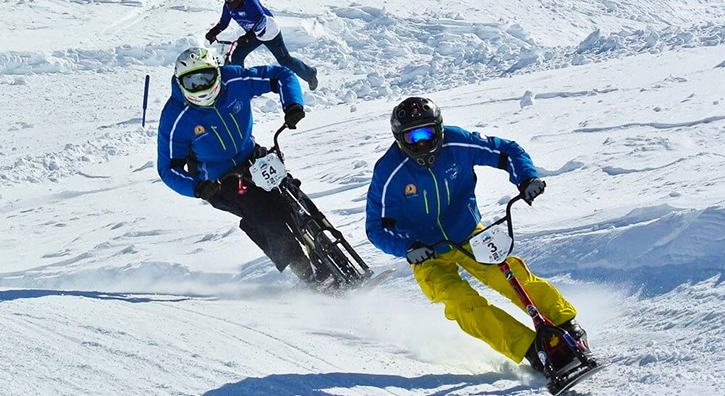0800 260 5082
Available from Monday to Friday from 9am to 7pm, and Saturday from 10am to 7pm. Closed on Sunday.
Available from Monday to Friday from 9am to 7pm, and Saturday from 10am to 7pm. Closed on Sunday.
What is a snowscoot? This name is still quite unknown to the general public today. While it has many fans among young people, it remains fairly unfamiliar to older skiers and non-skiers alike. Follow our tips to discover the snowscoot.
Born in 1990 and appearing about five years ago in ski resorts, the snowscoot is a new winter sport that combines elements of BMX and snowboarding. With around 60,000 enthusiasts worldwide, including 10,000 in France, snowscoot blends speed and freestyle, offering riders the thrill of mountain biking or BMX on and off the slopes.
To enjoy snowscoot, you don’t need to be skilled in skiing or snowboarding, although knowing the basics of edging will definitely help. Having experience with mountain biking or BMX can make learning the snowscoot easier.
In any case, good balance and not being afraid of speed are essential.
Wearing a helmet, knee pads, and back protectors is strongly recommended. Although falls are rare, they can be painful, as the snowscoot weighs around ten kilos.
Snowscoot requires excellent physical fitness because, unlike skiing or snowboarding, it demands full-body engagement. Your legs stay bent, while your arms and lower back work hard.
The BMX-style frame may feel uncomfortable for taller riders.
Hit the slopes this winter!

The main piece of equipment for this sliding sport is the snowscoot, which consists of two boards similar to those used in snowboarding, a frame, a handlebar without brakes, and a fork. The front board is wider but shorter than the rear one. Unlike skiing and snowboarding, the feet are free and only held by a footstrap on the board.
No special boots are required—you can even wear hiking shoes. A leash attaches the rider to the snowscoot, just like in surfing.
Using a silent block helps absorb shocks, making your rides even more enjoyable.

There are two types of snowscoot: Freestyle, designed for tricks, and Freeride, built for speeding down the slopes. The Freeride model is generally easier to rent than the Freestyle one.
Snowscoot rentals cost between £20 and £50 per day, depending on the ski resort. You’ll also need a lift pass, just like a skier, as snowscoots are allowed on chairlifts and drag lifts.
Often wrongly seen as a dangerous sliding sport, snowscoot is actually easier to learn than skiing or snowboarding. Many beginner lessons are offered at ski resorts (around £40 per hour, excluding rental).
Usually, just a few runs are enough to master snowscoot handling. You might be surprised at how quickly you pick up speed and will need to use some strategy to navigate your turns.
Braking involves positioning yourself perpendicular to the slope and generally takes longer than when skiing.

The snowscoot has made its way onto the slopes of most major ski resorts in the Alps, Vosges, and Pyrenees, including Cauterets, Saint-Lary, Font-Romeu, Tignes, La Clusaz, Courchevel, Les Menuires, Les Arcs, La Plagne, and many more.
While a few resorts haven’t embraced it yet, snowscoot remains available in numerous French ski destinations.
Few resorts lack a snowpark—a true playground where you can literally catch air on a snowscoot and land safely on huge airbags, perfect if you’re tempted to try some freestyle tricks.